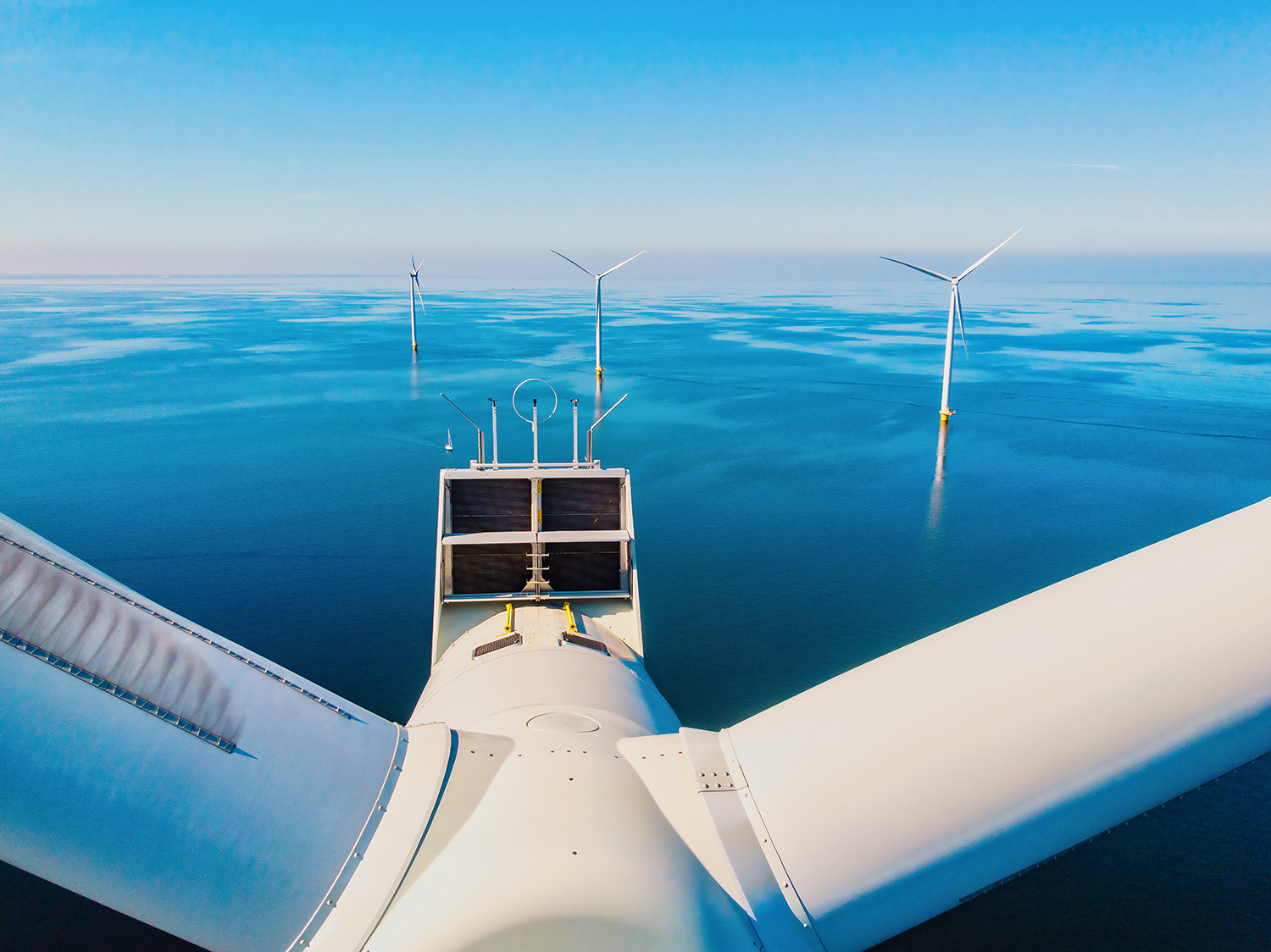
The Technology
Offshore wind infrastructure
An offshore wind farm consists of several key components. First, it includes numerous wind turbine generators, or turbines, spread across an ocean area. Each turbine is securely anchored to a foundation on the seabed, with a tower that rises into the air, allowing the blades to capture the stronger wind speeds that are found offshore.
The power generated by each wind turbine travels through cables down the tower and under the seabed via array cables to an offshore substation. At the offshore substation, the energy is converted to a higher voltage for transmission to shore through high voltage export cables. This higher voltage reduces energy loss during transmission.
Once on land, the onshore substation adjusts the voltage again, enabling the electricity to be distributed through the Victorian electricity grid via power lines to homes and businesses.
Why offshore wind?
Offshore wind generates more power more consistently than onshore wind due to near constant offshore winds, and because larger turbine sizes can be used.
The scale of generation offered by projects like ours makes offshore wind an important resource for the energy transition and an important contributor to the overall energy mix.
A mix of energy generation technology including solar, onshore and offshore wind and storage located at different points around the network is beneficial for maintaining grid strength and supporting Australia’s energy needs.
Turbine technology
Our project proposes to use fixed jacket foundations which is one of the most commonly used type of technologies for deeper water.
Floating technology may also be used in environments where the seabed is too deep for fixed foundations.
Offshore wind turbine technology is changing rapidly with turbine size and capacity growing.
The size and number of wind turbines deployed will be assessed as the project evolves and will be dependent on the findings of site surveys and technology at the time of procurement.





